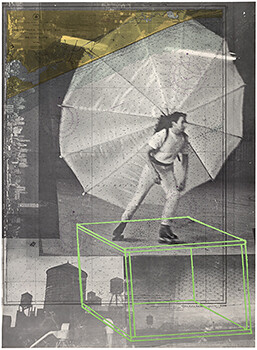March 17–August 20, 2017
Williams College Museum of Art
15 Lawrence Hall Dr.
Williamstown, MA 01267
Hours: Friday–Tuesday 10am–5pm,
Thursday 10am–8pm
First exhibition to make extensive use of Robert Rauschenberg’s archives at WCMA
Robert Rauschenberg: Autobiography brings together 26 original works of art with 56 archival objects primarily on loan from the Robert Rauschenberg Foundation and centers on the artist’s monumental print, Autobiography, 1968. The exhibition will be on view at the Williams College Museum of Art (WCMA) from March 17 through August 20, 2017.
Robert Rauschenberg: AutobiographyRauschenberg created Autobiography with Broadside Art Inc., founded by arts patron Marion Javits and graphic designer Milton Glaser making billboard printing technology available to artists. Printed in three parts, the work measures nearly 4 ½ by 17 feet and comprises several significant motifs that recur throughout Rauschenberg’s oeuvre. Included in the exhibition are archival documents directly related to Autobiography such as the original 1968 advertising brochure for the print, and multiple source materials including a childhood photograph of Rauschenberg and his parents, the artist’s horoscope, and photo-reproductions of an x-ray of his body. Video and photographic documentation of Rauschenberg’s performance collaborations—in particular his first performance Pelican, 1963, which is featured in Autobiography—include photographs by Seymour Rosen, Peter Moore, Elizabeth Novick and others.
AutobiographyAutobiographyPelicanAutobiographyThe Robert Rauschenberg Foundation has been processing the artist’s archives over the last two years and recently made them fully accessible to scholars. The Foundation’s “Shuffle” program facilitates collaborations with college museums, in which works from the Foundation’s art collection are made available for exhibition and study. The WCMA project is the first to mine the archives for a college course and related exhibition. In the art history/museum class, Robert Rauschenberg Art, Archives and Exhibitions, developed and led by professor of art C. Ondine Chavoya and curator of contemporary art Lisa Dorin, Williams students researched the artist’s life, work, and the often blurry lines between the two. The students studied the history of archives and how exhibitions make use of them, and spent two full days in the Robert Rauschenberg Foundation Archives in New York working closely with Francine Snyder, the Foundation’s director of archives and scholarship.
Robert Rauschenberg Art, Archives and ExhibitionsThe exhibition features several photographic self-portraits made while the artist was at Black Mountain College and a series of small-scale blueprints from the early 1950s made in collaboration with his then wife, artist Susan Weil. Booster, 1967, the largest lithograph that had been printed to date, refers to rocket technology developing as part of the space race and incorporates the same x-ray imagery he used the following year in Autobiography. Revolver II, also 1967, a large-scale kinetic sculpture with five rotating screen-printed Plexiglas discs, was made as part of Rauschenberg’s involvement with the collective of artists and engineers, Experiments in Art and Technology, (E.A.T.). The sculpture inspired his design for the 1983 Talking Heads album, Speaking in Tongues, which is on view. Hot Shot, 1983, from WCMA’s collection, reflects Rauschenberg’s sustained interest in technology and space exploration.
BoosterAutobiographyRevolver IISpeaking in TonguesHot ShotRauschenberg’s deep involvement with dance and performance in the 1960s and his collaborations with Merce Cunningham, John Cage, Alex and Deborah Hay, are explored through printed documents, photographs, video footage, and performance notes. Another source of inspiration for Rauschenberg were his pets. For Rauschenberg, animals were not only companions, (he kept a menagerie of beloved pets throughout his life) but also often the subjects of his art, and participants in his performance works: archival photographs and footage attest to the role animals played in his life and work.
In the spirit of Rauschenberg’s inherently collaborative process, the exhibition brings together a curatorial framework and checklist selections by the instructors with the collective research interests of the class: the artist’s use of his body in his work; performances; the role of collaboration; his love of animals; and fascination with technology. Attributions are proposed, connections are made, and objects rarely or ever seen together sit side by side, opening up brand new lines of inquiry.
Press contact: Kim Hugo, Communications Manager; T (413) 597 3352; [email protected]
[email protected][email protected]




